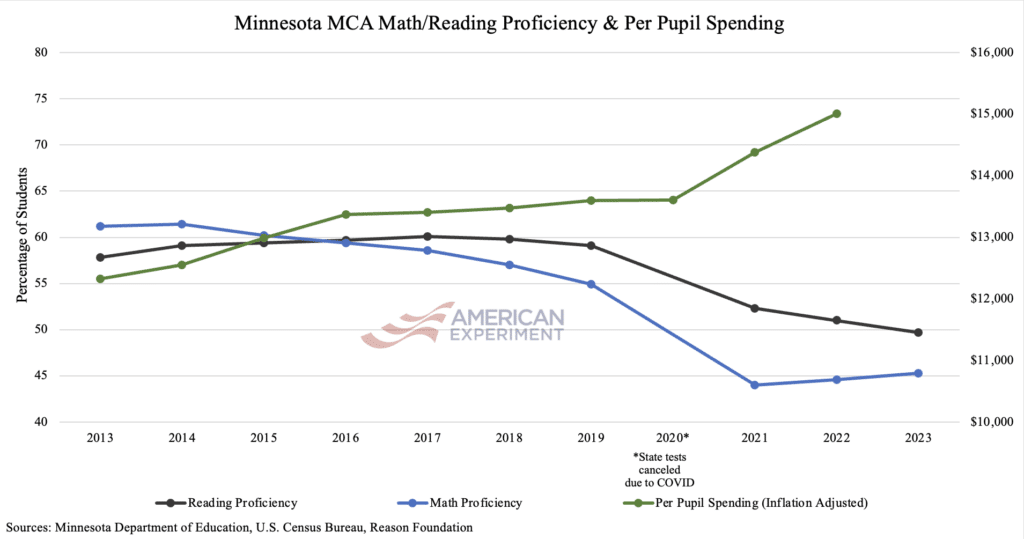(Center of the American Experiment) — More than half of Minnesota students don’t meet basic proficiency in reading or math, according to newly released 2023 statewide assessment results by the Minnesota Department of Education (MDE).
As measured by the 2023 Minnesota Comprehensive Assessments (MCAs), 50.3 percent of tested students do not meet grade-level reading standards, and 54.7 percent do not meet grade-level math standards. Compared to last year’s results, the percent of students proficient in reading has dropped 1.3 percentage points, while the percent of students performing at grade-level in math ticked up 0.7 percentage points.
The majority of Minnesota students take the MCAs — the reading test is administered in grades 3-8 and grade 10 and the math test in grades 3-8 and grade 11. An alternate assessment — the Minnesota Test of Academic Skills (MTAS) — is administered to students with the most significant cognitive disabilities. Combining the results of these two assessments, which MDE did in its news release, still shows that the majority of tested students aren’t meeting Minnesota’s reading and math standards, with 50.1 percent falling short in reading and 54.5 percent in math.
The decline in reading scores and subpar math results add on to Minnesota’s long-term trend of mediocre academic performance and declines that existed pre-COVID — despite the state continually spending more on education — and that were exacerbated by school closure policy decisions. Reading and math scores are far below what they were in 2019, down about 10 percentage points. (On national assessments, Minnesota reading and math scores are the lowest they have been in 30 years.)
During the 2023 legislative session, a new historic education spending budget of $23.2 billion was approved for the next two years, including $2.26 billion in new funding. Based on the state’s track record of spending hikes and yet still worrisome academic outcomes, we will see if these dollars can do what others haven’t done before to boost student achievement. The legislature did dedicate some of the new spending dollars toward overhauling literacy education and how reading is taught, which based on reading scores can’t happen soon enough.
While test scores are not the only indicator of success, they do play a key role in evaluating learning, and they help reveal the shortcomings of the state’s public school system. No longer can Minnesota hide in its averages.

Catrin Wigfall
Catrin Wigfall is a Policy Fellow at Center of the American Experiment.
Catrin’s experience in education and policy research began during her time with the Young Leaders Program at The Heritage Foundation. Her interest in education policy led her to spend two years teaching 5th grade general education and 6th grade Latin in Arizona as a Teach for America corps member. She then used her classroom experience to transition back into education policy work at the California Policy Center before joining American Experiment in February 2017.
Catrin graduated summa cum laude from Azusa Pacific University in California, where she earned a Bachelor of Arts degree in Political Science.


















